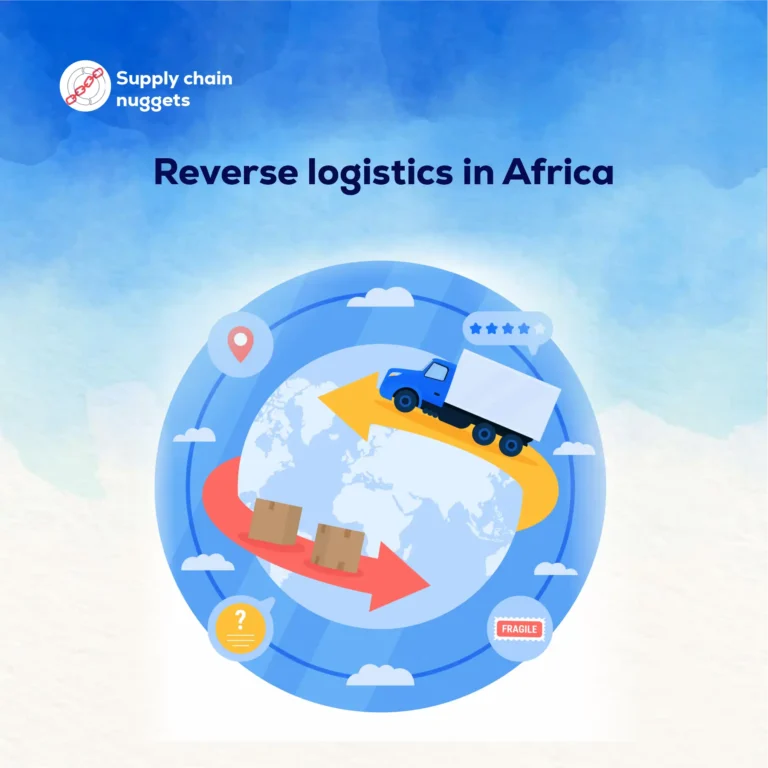
Supply chain lead time, at its core, measures the speed and efficiency of the operation. It is the amount of time it takes to deliver any given order. A supply chain’s ability to reduce lead time is one of the most critical factors that affect its productivity.
That is why reducing it is so important. To a great extent, the lead time will determine customer satisfaction in modern supply chain operations. 41% of customers want to receive their orders within 24 hours. And 24% want it within 2 hours.
Lead time is critical and makes all the difference between an effective supply chain and one customer do not want to associate with. Since supply chains are more interconnected than ever, lead time optimization typically starts with optimizing the entire operation.
Poor supply chain lead times do extend beyond mere annoyance. Especially when the supply chain is designed to run on a strict schedule. Such disruptions come with ripple effects that can be felt throughout the supply chain.
Factors That Impact Supply Chain Lead Times
Supply chains are prone to disruptions. And unfortunately, it doesn’t give ample notice that will allow supply chains to prepare. It is the same for supply chain lead times. Two types of disruptions can negatively impact supply chain lead times.
External Disruptions
These are supply chain disruptions that originate from nature or the government. They are typically difficult to control because they are independent of the supply chain.
Examples of external disruptions that can cause a delay in lead times are Natural disasters, poor state infrastructures, breakdown of transport infrastructure, and poor government policies.
Internal Disruptions
These are supply chain disruptions that originate from within or in-house. They are typically easier to identify and control. And can be eliminated by implementing real-time solutions or investment in technology.
Internal disruptions that cause longer lead times are poor communication, poor supply chain strategies, poor planning, and production bottlenecks.
These issues abound in supply chains worldwide. Getting a disruption-free supply chain can be challenging considering all that needs to be overcome, but it is possible. However, that doesn’t mean we cannot get our supply chain as close to perfect as possible.
How to Reduce Supply Chain Lead Times
Reducing lead times starts with optimizing the supply chain. A supply chain’s lead time depends on how it interacts with its process and stakeholders to achieve the desired objective. You can expect to see longer lead times if it is slow and ineffective. The reverse is also the case.
Identify Bottlenecks in The Supply Chain
To solve a problem, you have to identify the root cause of that problem. Your supply chain is the same way, and to reduce lead time, you have to find out why your lead times are taking so long in the first place.
Bottlenecks in the supply chain are stages or processes in the supply chain that constantly delay or disrupt the flow of the supply chain.
Bottlenecks can emerge from the type of inventory management implemented, the suppliers your supply chain is partnered with, and the production or manufacturing process.
Identifying these bottlenecks will greatly reduce supply chain disruption and inevitably improve lead times.
Invest in Domestic Supplier or Localize
Long-distance suppliers are more at risk of disruptions in the supply chain.
For instance, a Houston, Texas, manufacturer buys raw materials from a supplier in China. The manufacturer will be at risk from more disruptions in their supply chains than if they buy from a supplier in Michigan.
Domestic suppliers are less exposed to supply chain disruptions. However, globalization comes with the benefit of being cheaper for the supply chain.
It won’t be easy to disregard the financial benefit of sourcing from Supplier countries where the raw materials are cheaper.
A mix of both is a great way to get the best from both types of sourcing. Investing in domestic supply chains will go a long way to curtail poor lead times.
Invest in Supply Chain Forecasting
One of the primary reasons for poor lead times is poor supply chain planning. You cannot plan your supply chain if you don’t have data that projects sales.
This data is obtained from forecasting, which uses supply or sales data and mathematical formulas to predict or estimate future demands.
But why is Forecasting so important? Forecasting helps supply chain planning, which lets you work with a rough estimate of what to expect from consumers. Forecasting enables you to manage your expectations, increasing the supply chain’s efficiency.
A good forecasting technique is usually near accurate over a while. In Forecasting, always carry your partners along. It will help them plan, which effectively helps your supply chain.
Encourage Communication in The Supply Chain
Effective communication is the bedrock or strength of any great relationship. This statement is never as true as in supply chain operations.
Every supply chain has multiple parties and processes (internal and external). They may work great individually, but if they can not properly communicate with each other, the supply chain will be riddled with disruptions and inefficiencies.
Poor communication is particularly stinging to the supply chain when it directly affects the relationship between organizations and their external partners.
In reducing lead times in the supply chains, investing in effective communication can single-handedly create efficiency in any supply chain.
Consolidate Suppliers
It is easy to see why you need backup suppliers in your supply chain. However, the issue with having multiple suppliers is that it can be challenging to keep all of them happy. The exception is larger supply chain operations that can afford to create opportunities for all of them.
Too many suppliers can clog up the supply chain. And, of course, that will inevitably affect the supply chain lead time.
So why not consolidate these suppliers? Pick the best-performing suppliers, and see if you can entrust them with more services in your supply chain.
An advantage of consolidating the supply chain is that it tends to save you a lot of money because of the economies of scale principle.
While having a backup Supplier is excellent, you do not need more than one or at least two backups.
Eliminate Unreliable Suppliers
In 2008, during the United States’ economic downturn, Starbucks faced a supply chain crisis mostly caused by poor supplier choices.
Partnering with or collaborating with suppliers who do not share your values or business ideals would eventually cause issues in your supply chain.
Unreliable suppliers are those that never deliver, always delay or hold up the supply chain flow. To improve lead times, eliminate downtimes, and increase efficiency in your supply chain, you may want to consider getting rid of them.
Consistently collaborate with suppliers who share your values and business ideals and buy into the company’s vision.
Facilitate Automation in the Supply Chain
As supply chains evolve, technology becomes more synonymous with our supply chain. So why not lean into it?
Automating your supply chain operations will simplify and streamline the process. From order processing to inventory control, sorting, purchase orders, and many others.
Next to communication, automation may be one of the most critical factors in improving lead times in the supply chain.
Automation makes the supply chain faster, more accurate, and more reliable when compared to humans. Significant investment in automation will certainly reduce disruptions and inefficiencies significantly.
Conclusion
If you break it down, the supply chain lead time at its base form is all about speed and efficiency. A faster supply chain puts you ahead of your competition, and efficiency certainly doesn’t hurt cost reduction.
Implementing these seven tips when reducing lead times will also help you considerably improve the overall supply chain management. However, some of these tips must be carried out gradually, while you can work on others immediately. Example: communication.

Obinabo Tochukwu Tabansi is a supply chain digital writer (Content writer & Ghostwriter) helping professionals and business owners across Africa learn from real-world supply chain wins and setbacks and apply proven strategies to their own operations. He also crafts social content for logistics and supply chain companies, turning their solutions and insights into engaging posts that drive visibility and trust.









12 thoughts on “7 Guidelines to Reduce Supply Chain Lead Times”